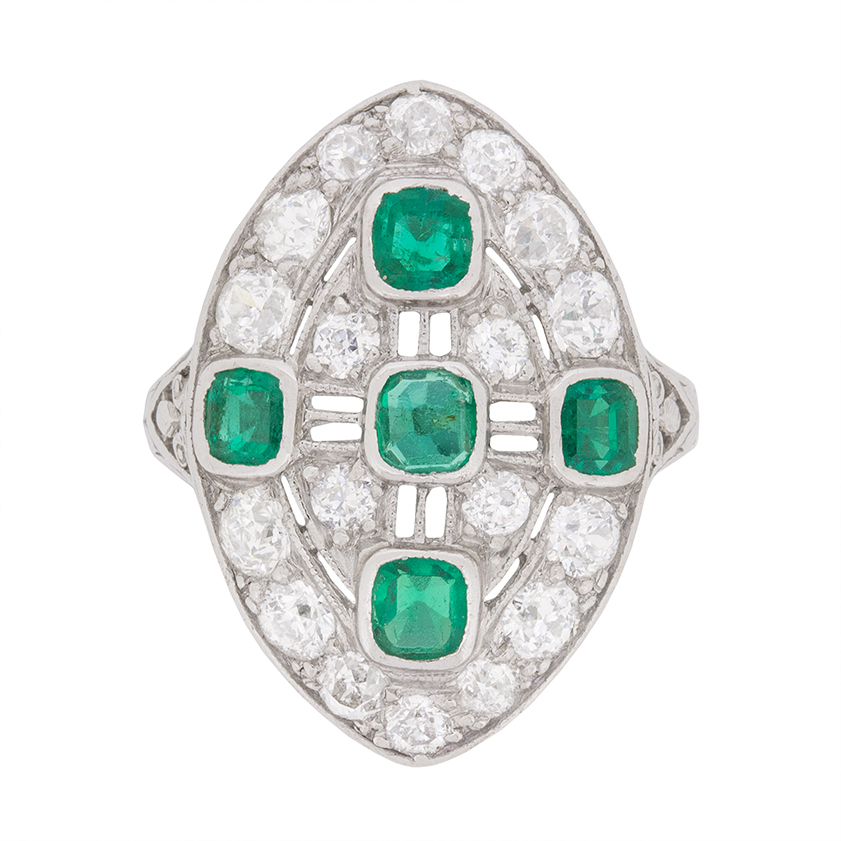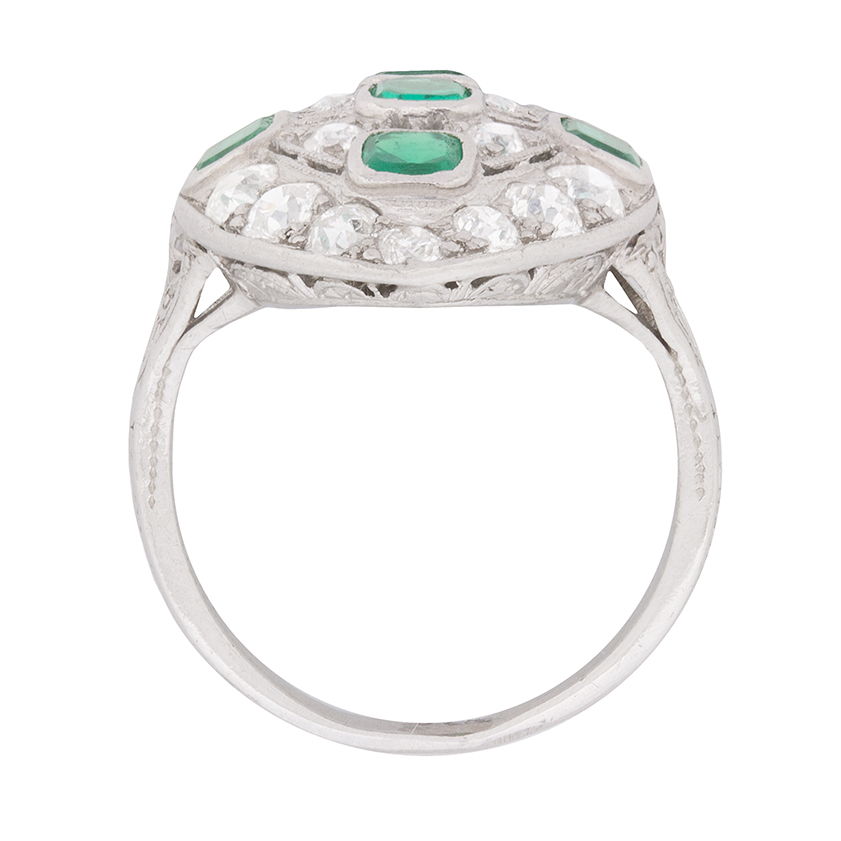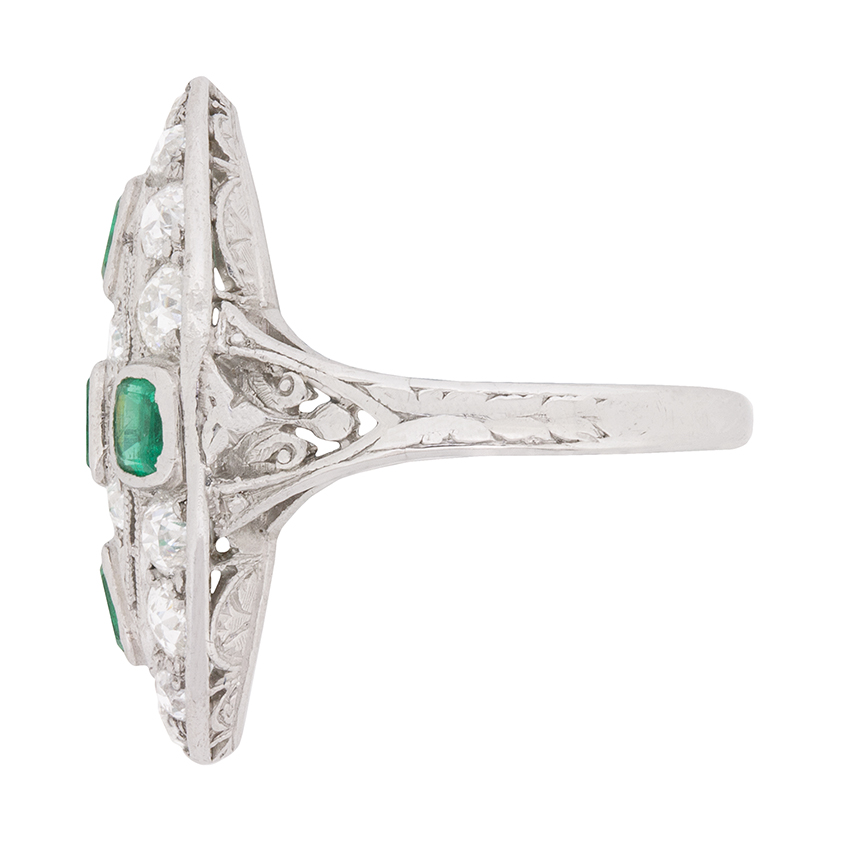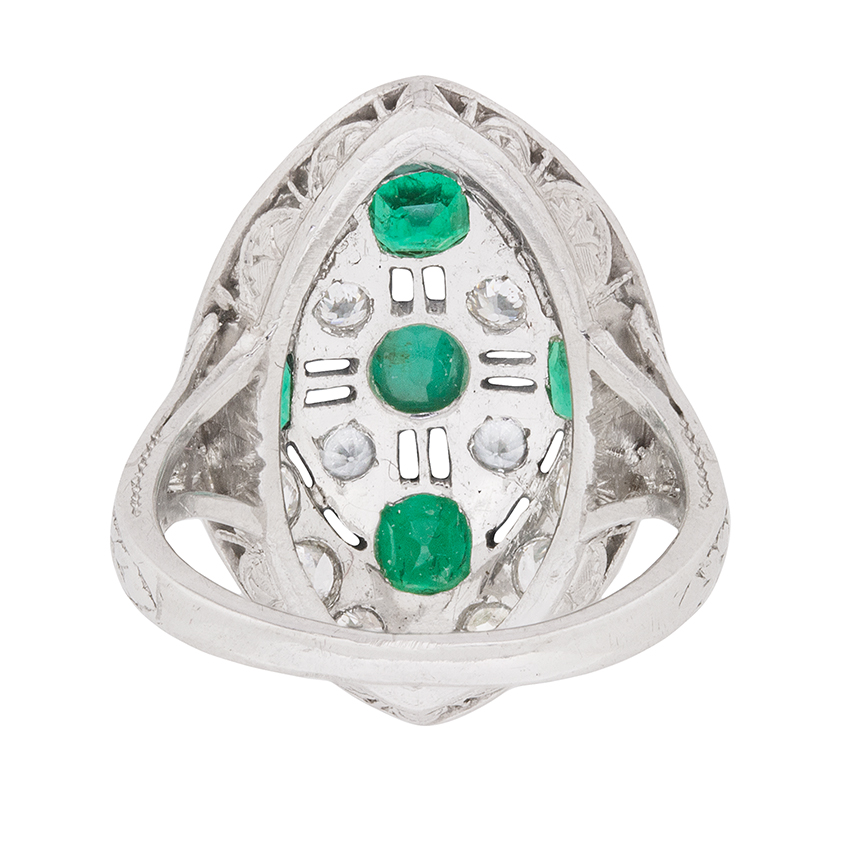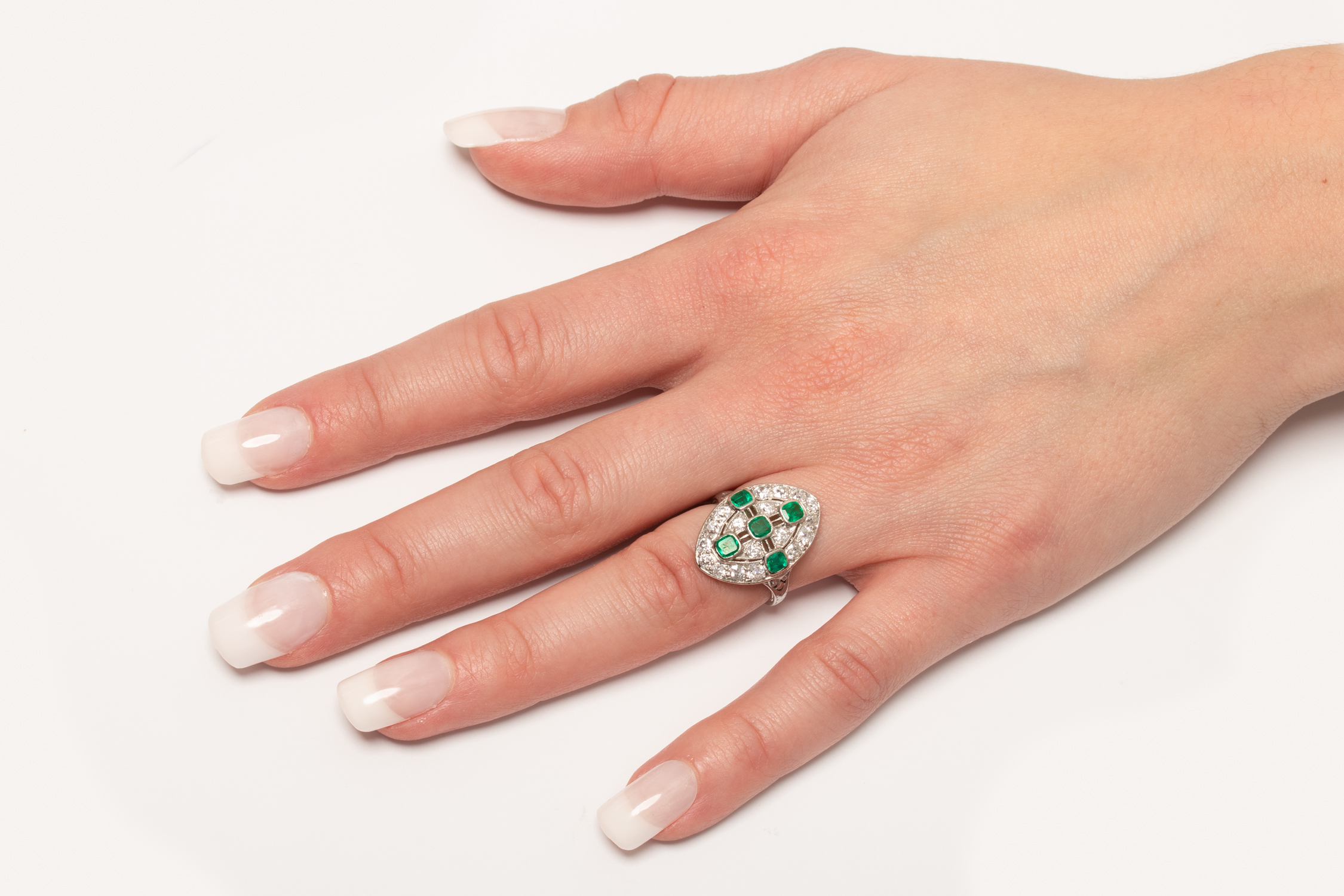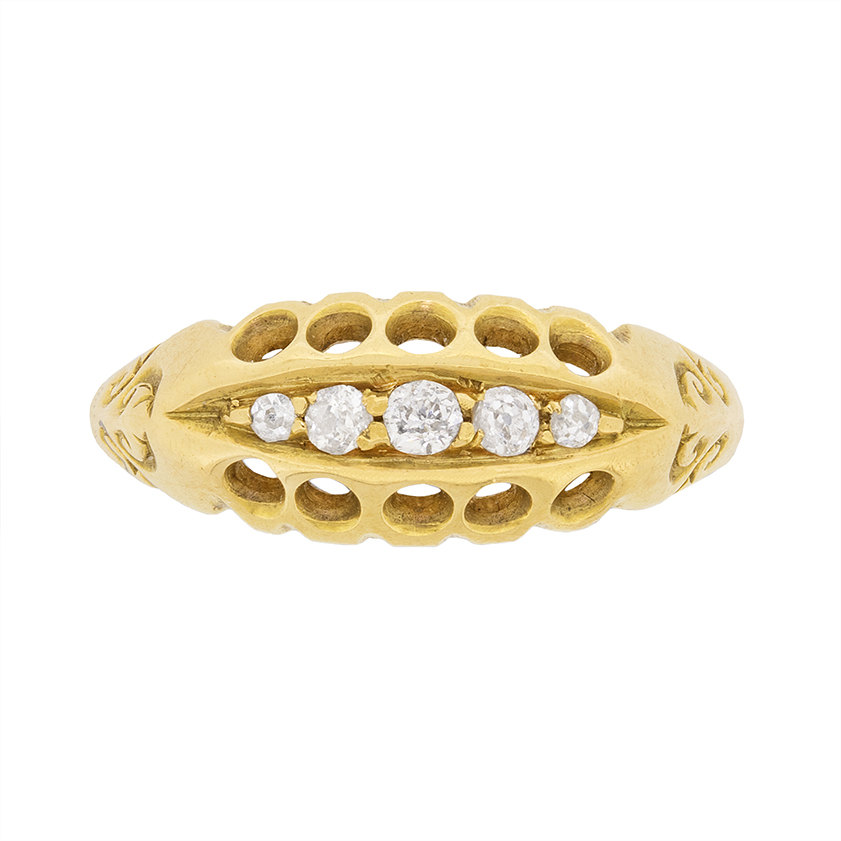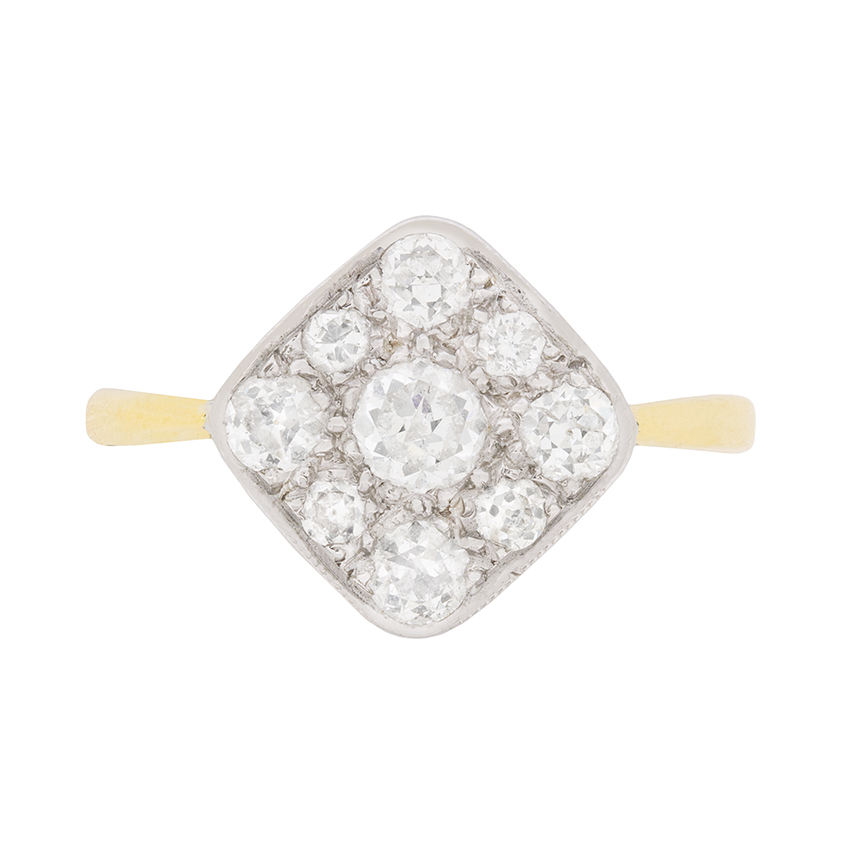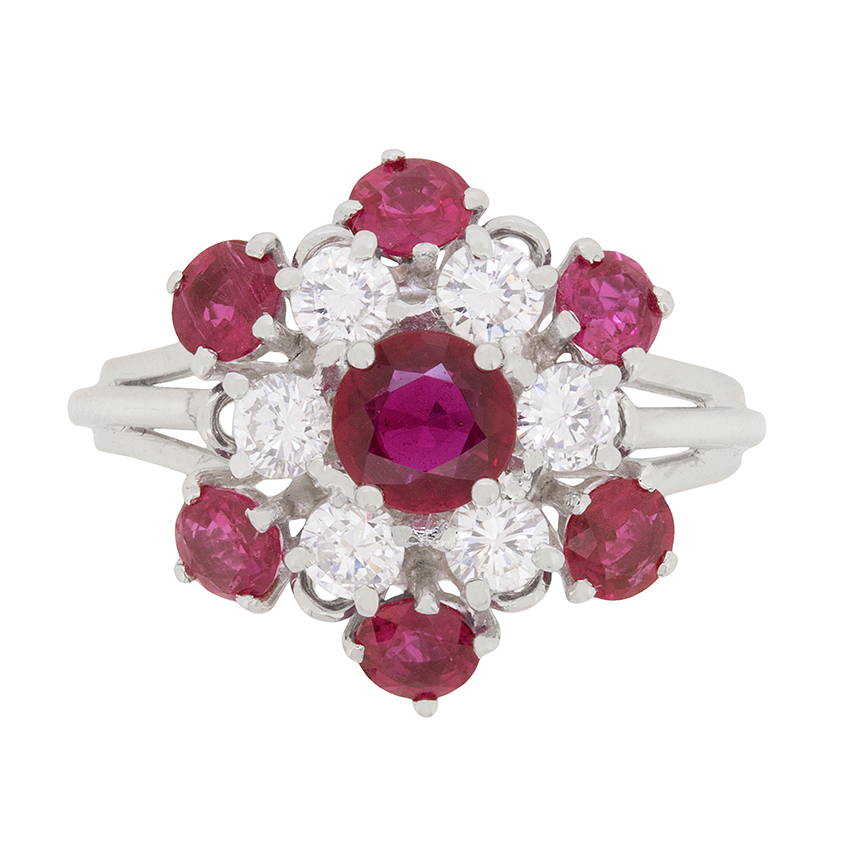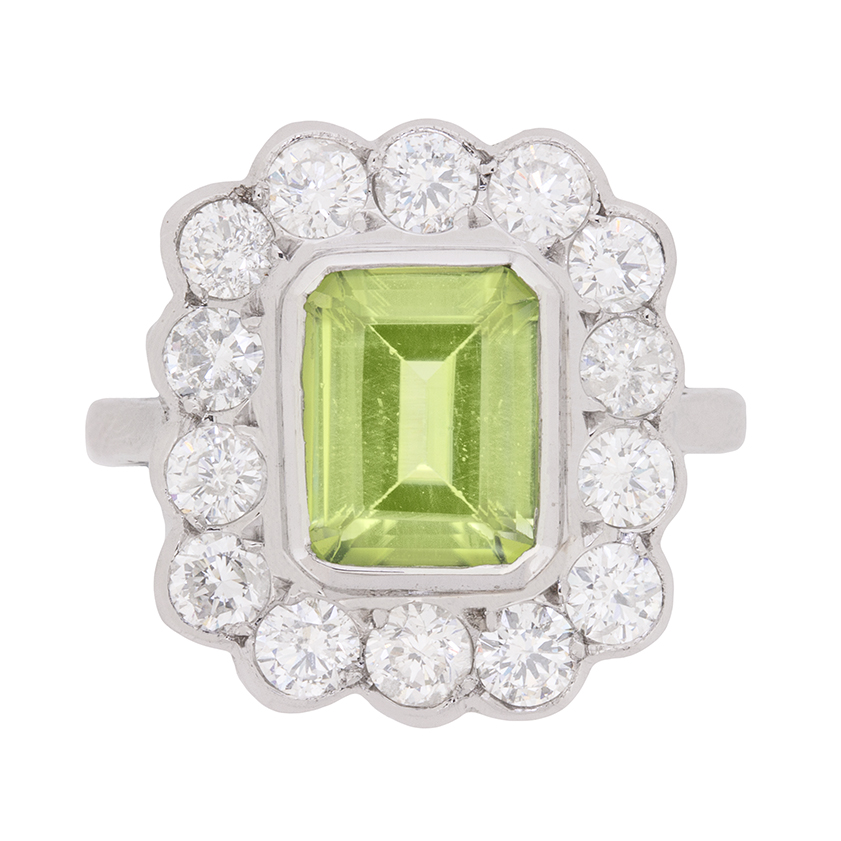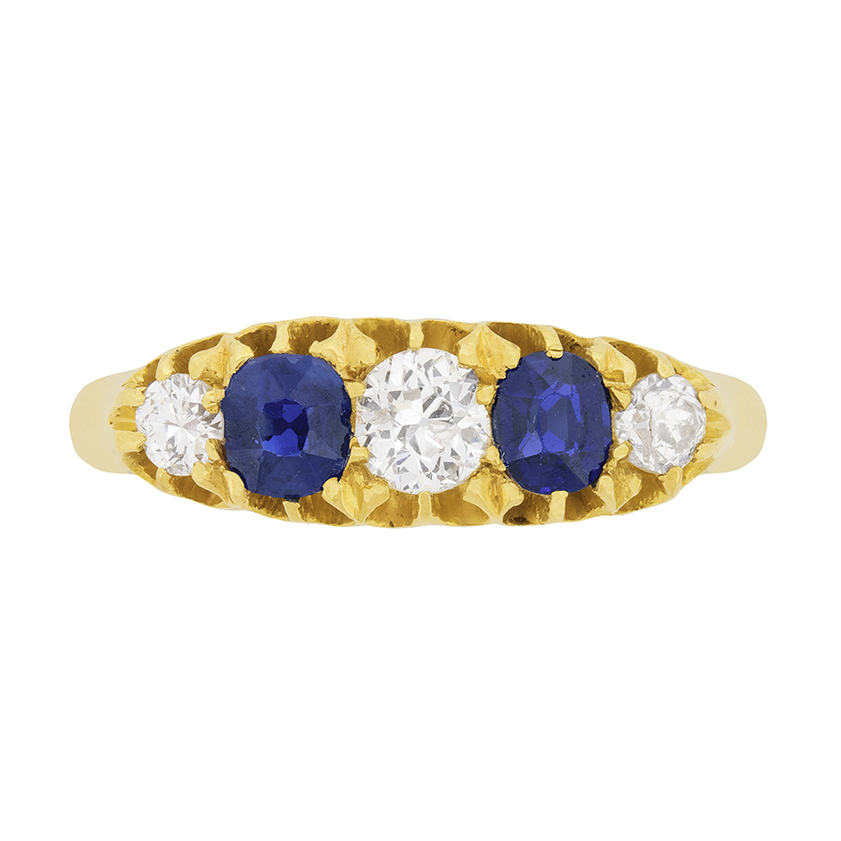5% off your first order!
Art Deco Diamond and Emerald Dinner Ring, c.1920s
Out of stock
Five old cushion cut emeralds in a bright shade of green comprise the horizontal and vertical centre of this original Art Deco dinner ring. Millegrained openwork detailing separates the emeralds, which are rub over set in box collets and accented at each of their four intermediate points by an old cut diamond to complete the ring’s central marquise shape. The ring’s outer edge forms a concentric marquise-shaped element, which is grain set with old cut diamonds around and between the emeralds set at its cardinal points. The deep green emeralds have a combined weight of 0.50 carat. Set entirely in platinum, this antique diamond and emerald dinner ring shows an exceptional level of 1920s era craftsmanship in its decorative gallery, intricately-carved shoulders, and the laurel leaf engraving on its shank.
Related Products
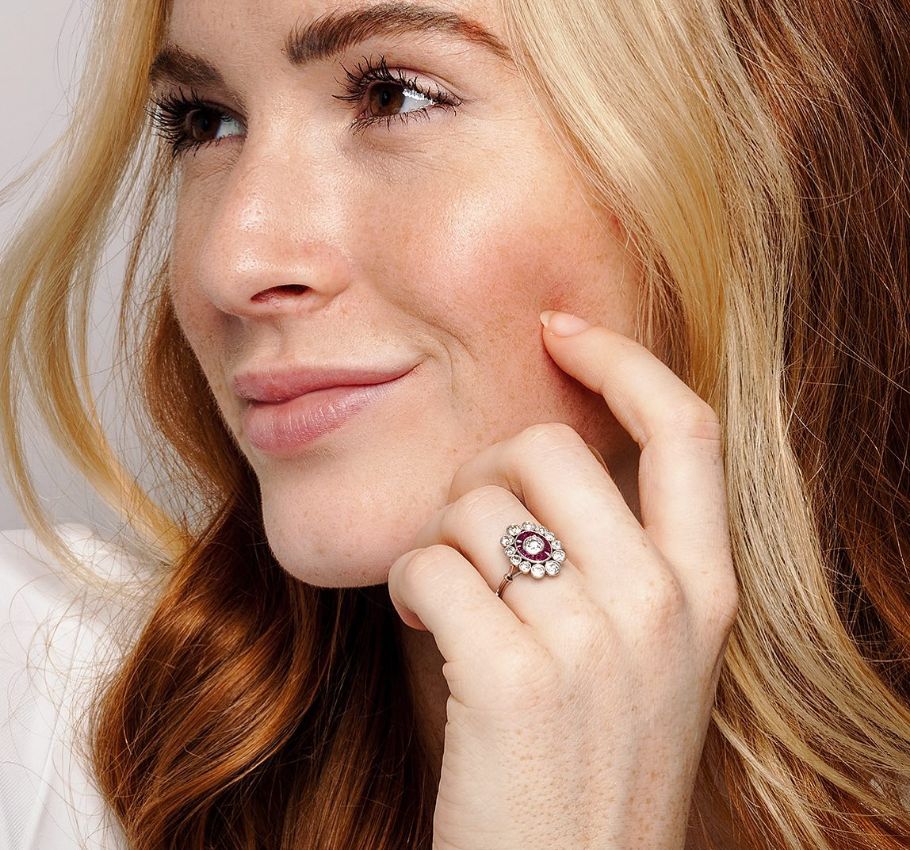
Book an Appointment
Seen something you like? Book an appointment to come in store and speak to one of our team
